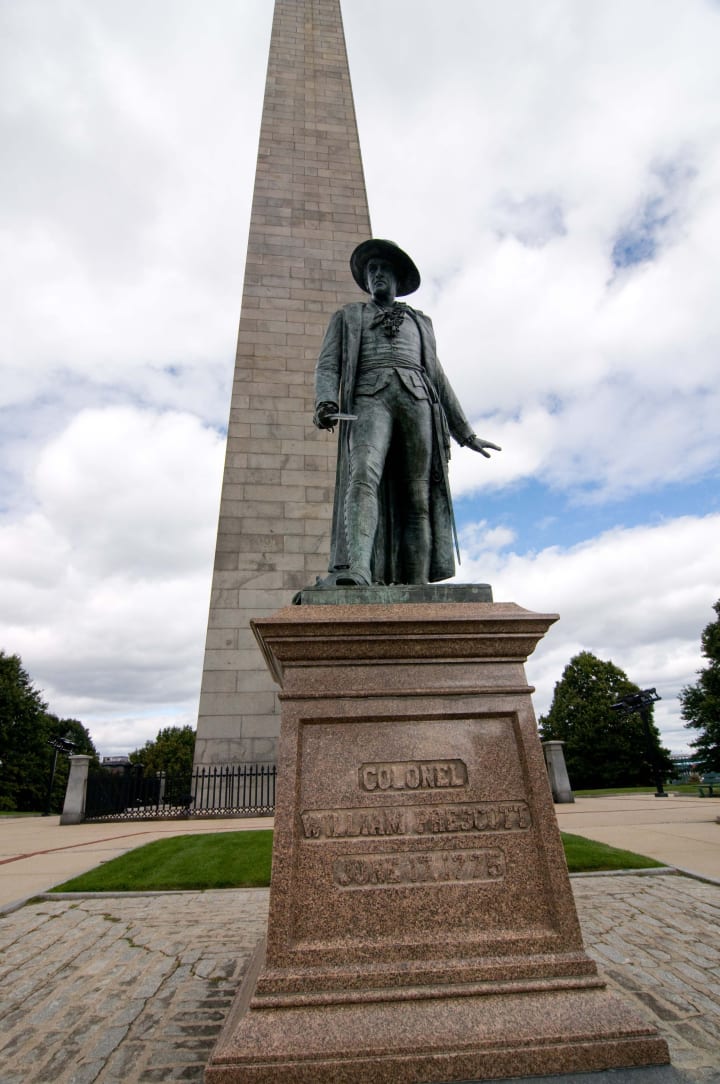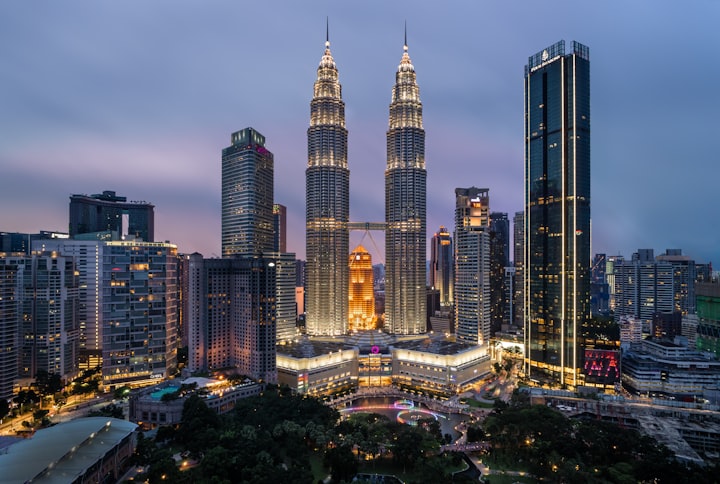Beautiful and Historic Boston
The capital of the US state of Massachusettes

Boston is the capital and largest city in Massachusetts. It was founded in 1630 and is one of the oldest cities in the U.S. It played a major role in the American Revolution.

The Charles River forms the border between downtown Boston, Cambridge, and Charlestown.

The Longfellow Bridge spans the Charles River. It is a steel rib arch bridge that connects the Beacon Hill neighborhood in Boston with the Kendall Square area in Cambridge.

In the very heart of Boston, you’ll find Boston Common. This is the oldest park in America and the start of the Freedom Trail. It is a large green space visited year-round. There are monuments and the Central Burying Ground of 1756. From November to mid-March, you can rent skates and skate on the Frog Pond. In the spring there are lovely blossoms to enjoy and in the fall the colors are amazing. In the summer it is a joy to watch children splash in the wading pool.

Adjoining Boston Common is the 24-acre Public Garden the oldest botanical garden in America.

It has Victorian-style monuments and statues among them an equestrian statue of George Washington.

Also the popular bronze statue of a family of ducks from the children’s book “Make Way for Ducklings” by Robert McCloskey. One of the city’s most iconic experiences is riding around the lake in the center of the garden on the famous Swan Boats which were first launched in the 1870s.

An exciting thing to do in Boston is to take the three-mile Freedom Trail. It will lead you past 16 of the city’s main historical monuments and sites. You just have to follow the line of red bricks on the sidewalk and by footprints at street crossings. At the Visitors Center in Boston Common, you can pick up brochures.

You will then head for the Old Granary Burying Ground the final resting places of Paul Revere, Samuel Adams, and John Babcock.

King’s Chapel Burying Ground is the oldest cemetery in the city with the graves of Governor John Winthrop and two Mayflower passengers.

Old South Meeting House where the speeches of patriots caused upheaval leading to the Boston Tea Party.

The Old State House is Boston’s oldest public building and the site of the Boston Massacre.

Then on through Boston’s North End past the Paul Revere House and Old North Church.

The trail ends across the bridge in Charlestown with the 54-gun frigate USS Constitution and the 220-foot Bunker Hill Monument.

The USS Constitution was nicknamed Old Ironsides. It is the oldest commissioned ship in the U.S. Navy and is still commanded and crewed by the Navy. The ship is open to visitors. Across the pier, you’ll find the USS Constitution Museum where visitors can learn about its history through interactive displays which illustrate life aboard a naval vessel two centuries ago. The Cassin Young, a WW II destroyer is another ship you can tour.

The neighborhood known as the North End is one of the oldest in Boston. This is where the silversmith and activist leader Paul Revere lived at the time of the American Revolution. It was the Paul Revere House from which he made his famous ride and is the only patriot’s house on the Freedom Trail. You can climb up to the tower of the Old North Church, where lanterns were hung in April 1777 to warn Paul Revere that British troops were heading for Lexington to arrest patriot leaders and confiscate the munitions supplies.

The North End is a favorite with tourists because of its Italian character and flair. Here you can find Italian restaurants, cafes, bakeries, and shops. Visit the North Bennet Street School where skills like bookbinding, cabinet and furniture making, carpentry, silver and gold work, and violin making are taught. The gallery shop is a great place to find one-of-a-kind gifts.

Faneuil Hall had long been known as the “cradle of liberty”. It was built in 1740 by Peter Faneuil, a Huguenot merchant. It was built as a market hall always to be open to the public. The ground floor has market stalls and on the upper floor is a council chamber used in the 18th and 19th centuries as a meeting place for revolutionaries and later, for abolitionists. On the fourth floor is the Ancient and Honorable Artillery Museum with weaponry, uniforms, and paintings of significant battles.

Next to it is the Faneuil Hall Marketplace which includes three long halls – Quincy Market, North Market, and South Market. These date back to the early 19th century. Here you can find an assortment of shops, restaurants, and exhibitions. In the square around the market, you can see street performers and buskers putting on shows. There are also many stalls selling food, jewelry, clothing, gifts, and souvenirs. This is also home to Durgin Park, one of the many historical places to eat in Boston.

Fenway Park is known as “America’s Most Beloved Ballpark”. It is an interesting place to visit for sports fans and even those not interested in sports. It is the home of the Boston Red Sox and looks about the same as it did when it opened back in 1912. The most recognizable feature is the Green Monster, the 37-foot green wall in left field. From the old days, there is a hand-operated scoreboard.

Beacon Hill is one of Boston’s most beautiful neighborhoods. The south side of this neighborhood has traditionally been the home of Boston’s “old money” families that are locally known as “Brahmins”. There are tree-shaded streets and brick homes in Federal and Greek Revival styles. At the very heart is Louisburg Square. Homes here face onto a leafy private park. Author Louisa May Alcott lived here from 1880 to 1888.

The Nichols House Museum is a Federal-style home that shows how upper-class residents lived in this neighborhood. It has collections of 16th to 19th-century furnishings and decorative arts.

Charles Street at the western foot of Beacon Hill is lined with boutiques and shops.

Facing the Public Garden is the popular The Bull and Finch which was established in 1969 and inspired the TV show Cheers.

On the north side of Beacon Hill are homes to immigrants including the African American community since the early 19th century. National Park Rangers offer free guided tours of the Black Heritage Trail from April through November. Self-guided tours are available as well.

The Boston African American National Historic Site includes 15 pre-Civil War homes, businesses, schools, and churches that show how this community looked in the 19th century.

The Museum of Afro-American History runs the African Meeting House which is the country’s oldest church built by and for Black Americans.

The 1834 Abiel Smith School was the first grammar school for African American children.

The Boston Museum of Fine Arts is one of the leading art museums in the U.S. It has collections of Impressionist paintings, ancient Egyptian treasures, Asian and Persian fine arts, and artworks from ancient Greece and the Middle East. One of the highlights here is the American Wing with amazing collections of American paintings, furniture, decorative arts and so much more.

The Back Bay area's main square is surrounded by old and modern buildings. One side is formed by the Boston Public Library. It has impressive Renaissance Revival architecture and murals by John Singer Sargent and Edwin Abbey. Over the front entrance are granite medallions created by American sculptor Augustus Saint-Gaudens.

Facing the library across a grassy lawn is Trinity Church. This red sandstone building was designed by architect Henry Hobson Richardson in his distinctive style known as Richardson Romanesque. The murals, frescoes, and painted decorations inside the church were done by John La Farge.

On the third side of the square is the Fairmont Copley Plaza. These are three buildings that are backed by the sheer glass wall of a skyscraper and together create an amazing cityscape. A block down is the finish line of the Boston Marathon.

Beyond that is the Prudential Center, a 32-acre complex of apartments, shops, restaurants, and a 52-story tower. For amazing views across the city visit the Skywalk Observation on the 50th floor.

John F. Kennedy Presidential Library and Museum is dedicated to the memory of the 35th President of the U.S. John F. Kennedy. The museum stands on the south shore of the city. It features three theaters, personal memorabilia, photos, and historical exhibits documenting the life of JFK and his presidency.

The Isabella Stewart Gardner Museum is housed in a building that was created after a 15th-century Venetian palace. The displays of collections are in rooms that are surrounded by a four-story central courtyard with flowering plants and fountains. There is a 2500-piece collection of paintings, sculptures, furniture, tapestries, decorative arts, books, and manuscripts that reflect the flamboyant taste of Mrs. Gardner.

Behind the palazzo is a 70,000-square-foot glass-clad building that was designed by Italian architect Renzo Piano. It is a stunning space for music and visual arts. The amazing Piano wing has transparent walls so you can see the palazzo and gardens. After the tour, you can walk through the Fens which is a long green space with a lovely rose garden in bloom from June through October.

An amazing thing to see is the Boston Waterfront. It is a mix of residential and commercial space and is connected by the Harbor Walk. This is an attractive walkway with parks, public art, benches, cafes, interpretive signs, and access to cruise boats, ferries, and water taxis. A shuttle boat will take you to the Charlestown Navy Yard.

You can enjoy seeing Christopher Columbus Waterfront Park, Commercial Wharf, India Wharf, Long Wharf, and Rowes Wharf. Leading to the vibrant Seaport District and the Institute of Contemporary Art.

Take a look at the Boston Tea Party Ship, a replica of one of the original ships from which the Sons of Liberty dumped tea into Boston Harbor.

The New England Aquarium on the waterfront has over 20,000 fish and aquatic animals that represent more than 550 species. There is a man-made coral reef with tropical fish and underwater life like sharks, turtles, and moray eels. The Edge of the Sea touch tank lets visitors touch such creatures as crabs, starfish, and urchins. Outside of the aquarium, you can watch harbor seals play, perform, and live. There are educational programs and whale-watching tours outside of Boston Harbor. The adjacent IMAX Theater shows 40-minute films on nature subjects.

The Boston Symphony Orchestra gave its inaugural concert in 1881 at Symphony Hall. It is also home to the Boston Pops Orchestra. On the riverside, you can enjoy outdoor concerts in the Hatch Memorial Shell which is on the Esplanade and has become a Boston Landmark. On the Fourth of July each year the Boston Pops Orchestra plays the 1812 Overture while the audience sits on the lawn.
About the Creator
Rasma Raisters
My passions are writing and creating poetry. I write for several sites online and have four themed blogs on Wordpress. Please follow me on Twitter.






Comments
There are no comments for this story
Be the first to respond and start the conversation.